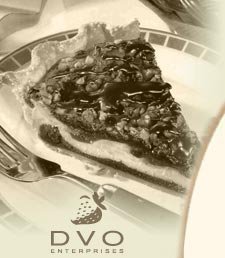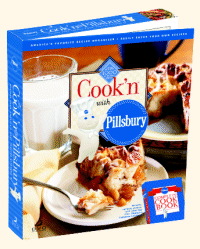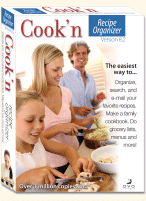
|
Never miss another recipe... Sign up for our free monthly newsletter today!
Subscribing will not result in more spam! I guarantee it! NEWSLETTER
• Current Issue• Newsletter Archive • Sign Up Now 
Cook'n with Betty Crocker 
Cook'n with Pillsbury 
Cook'n with a Taste of Home 
Cook'n in Italy 
Cook'n in Mexico |
 |
08-Handling Food Safely |
|
The recipe below is complete except for the ingredient amounts (_). Since the recipes offered at DVO.com are brand name recipes, our publisher partners require us to account for each recipe distributed. To get the entire recipe click Request Recipe below. This is the best 08-Handling Food Safely recipe on the web!! THE BASICS * A standard rule, recommended by the U.S. Department of Agriculture, is to keep hot foods hot (above 140°) and cold foods cold (below 40°). Cooking and refrigeration can control most food-poisoning bacteria. * Keep everything in the kitchen very clean because most bacteria get into food through improper handling. Keep countertops, appliances, utensils and dishes sanitary by cleaning with hot, soapy water or other cleaners. * Don't allow hot or cold foods to remain at room temperature for more than two hours, including preparation time. Bacteria thrive in room-temperature and lukewarm food. * Once food has been cooked, keep it hot until serving time, or refrigerate it as soon as possible. Immediately place hot food in the refrigerator unless doing so will raise the refrigerator temperature to above 45°. Food will cool more quickly in shallow containers (less than 2 inches deep) because it is spread out in a thinner layer. * Wash hands thoroughly with hot, soapy water. If you have any kind of cut on your skin or infection on your hands, avoid handling food, or wear protective plastic gloves. * Use disposable paper towels when working with or cleaning up after preparing raw poultry, meat, fish or seafood. If using dishcloths, wash them in the washing machine with hot or warm water and detergent before using them again. HANDLING RAW POULTRY * For specific information on storing poultry, go to the Poultry Storage information on page 9. You will find a lot of good information to help you. * Remove giblets (gizzard, heart and neck) if present, and rinse the cavity of the bird. Rub the cavity lightly with salt, if you like; however, do not salt the cavity if the bird will be stuffed. * Wash your hands in hot, soapy water before and after handling raw poultry. * Do not use wooden cutting boards for raw poultry. Hard-plastic cutting boards are less porous and therefore safer, and are easily cleaned or washed in a dishwasher. After working with raw poultry, wash the plastic boards with a mixture of 2 teaspoons chlorine bleach to 1 quart (4 cups) of water. Wash any knives used in hot, soapy water. * Use disposable paper towels when working with or cleaning up after preparing raw poultry. If using dishcloths, wash them in your washing machine with hot or warm water and detergent before using them again, so they won't contaminate the surfaces they touch with harmful bacteria. Throw away dirty or mildewed dish sponges. * Be careful not to transfer potential bacteria from raw meat to cooked meat. For example, never carry raw poultry to the grill on a platter and then serve cooked poultry on the same unwashed platter. Do not cut up raw poultry and then use the same knife and cutting board to prepare other foods unless both have been washed thoroughly. STUFFING POULTRY * Don't pack the stuffing tightly into the cavity of the bird. Always stuff the poultry cavity loosely, so the stuffing cooks all the way through. The center of the stuffing must reach 165°. Never store leftover stuffing inside poultry because it can't cool quickly enough. Always remove the cooked stuffing from the cavity and store it in a separate container. * Never stuff a chicken or turkey and then refrigerate or freeze it for later roasting; always stuff it just before cooking. This will help prevent any bacteria from contaminating the stuffing. STUFFING ALTERNATIVES You don't need to fill poultry with stuffing. Some people just add a couple of quartered onions and a clove or two of garlic to the cavity; others add wedges of fresh lemon or orange and fresh herbs-it's up to you. It's just fine to bake stuffing in a covered casserole dish alongside the poultry. In fact, many people love it this way because during the last 30 minutes or so of baking they can remove the cover from the stuffing so the top of the stuffing gets nicely crisp, crunchy and golden brown. COOKING POULTRY Always cook chicken and turkey until well done, never medium or rare. Don't stop cooking poultry partway through and then finish cooking it again later, because partial cooking may encourage bacteria growth before cooking is complete. The U.S. Department of Agriculture recommends using a meat thermometer when cooking whole chicken or turkey. When using a meat thermometer, the internal temperature should reach: 180° for whole birds 170° for whole turkey breasts, bone-in pieces, boneless pieces 165° for stuffing From "Betty Crocker Best Chicken Cookbook." Text Copyright 1999 General Mills. Used with permission of the publisher, Wiley Publishing, Inc. All Rights Reserved. 02-How Do I Buy Great Chicken or Turkey? 03-Poultry Storage 04-How to Flatten Chicken Breasts 05-Cutting up a Whole Chicken 06-How to Bone a Chicken Breast 07-Get the Facts on Food Safety 08-Handling Food Safely 10-Thermometer Facts 11-Roasting Chicken and Turkey 12-Great Grilling 14-Poaching Chicken 15-How Much Poultry? 16-Microwaving Poultry 17-Use Your Favorites! 18-Moist Poultry Secrets 09-Check It Out! 13-Carving Poultry |
|
|
Affiliate Program | Privacy Policy | Other Resources | Contact Us
© 2008 DVO Enterprises, Inc. All rights reserved. Sales: 1-888-462-6656 |
